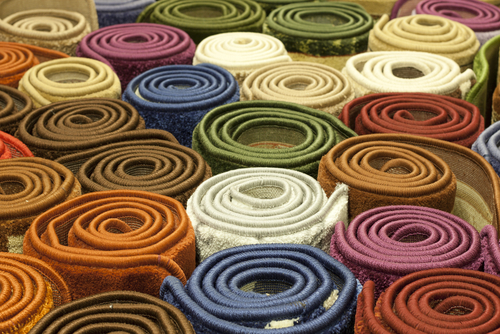 |
For decades, carpet manufacturers found seemingly new and better ways to produce carpets that resisted water, soil and stains, making them perfect for use in even the busiest homes and businesses nationwide. Unfortunately, the chemicals used to produce such wonder carpets were also building up, or bioaccumulating, in humans, wildlife and the environment and are now known to be toxic in laboratory animals, causing reproductive, developmental and systemic problems.
Although the exact sources and pathways of the chemicals, known as long-chain perfluoroalkyl carboxylates (LCPFACs), are not fully understood, they may be attributed to chemical releases during manufacturing of the chemicals, processing into carpet and textile products, and ordinary wear and tear on the finished products over time. LCPFAC chemical substances are synthetic chemicals that do not occur naturally in the environment.
Forget expensive calls to lawyers and consultants. With Enviro.BLR.com, you get instant access, 24/7. Try it out today and get an the 2014 EHS Salary Guide, absolutely free. Download Now.
Specifically, the new rule defines “long-chain LCPFACs” as having seven to an upper limit of 20 carbon chain lengths. The category, as delineated in 40 CFR 721.10536(b)(1)(i) through (b)(1)(v) of the rule also incorporates salts and precursors of the LCPFACs, including all fluorotelomers, that may be simple derivatives of perfluorooctanoic acid (PFOA) and higher homologues, as well as certain polymers that may degrade to PFOAs or higher homologues. Also subject to the new rule are LCPFAC chemical substances defined in (b)(1)(i) through (b)(1)(v) that are intentionally used during fluoropolymer formulation, such as an emulsion stabilizer in aqueous dispersions used as a final product in carpets or to treat carpets.
To address the laboratory findings and other potential impacts, in 2006 the EPA initiated the PFOA Stewardship Program in which eight major U.S. producers of LCPFACs voluntarily pledged to reduce global emissions and product content of the chemicals, including in carpets and carpet after-care products, by the end of 2015. Today, according to the EPA, the category of chemicals has largely been voluntarily phased out in the United States, but could remain a problem for Americans if it is contained in imported carpets. Moreover, since the Stewardship Program was voluntary and not all LCPFAC producers participated, new domestic uses of the chemicals could occur, reintroducing LCPFACs into homes, businesses and the environment.
Everything You Need for Environmental Compliance
Enviro.BLR.com puts everything you need at your fingertips, including practical RCRA, CAA, CWA, hazardous waste regulatory analysis and activity, news, and compliance tools. Try it at no cost or risk and get a FREE report.
As result, the EPA recently issued a final rule effective December 23, 2013, that will fill the gap between the voluntary industry actions and in all out ban on LCPFACs through the SNUR option under the Toxic Substances Control Act (TSCA). The new SNUR primarily requires that persons notify the EPA at least 90 days before beginning manufacture (including import) or processing of LCPFACs for use as a part of carpets or carpet treatments as a significant new use. The 90 day notice will provide the EPA with the time necessary to evaluate the intended use of the LCPFAC and to limit or prohibit that use before it occurs, as needed. Two substances used as surfactants in aftermarket carpet cleaning products as an ongoing use were exempted and are not considered significant new uses in the final rule.*
In addition, the EPA will no longer allow the earlier article exemption at 40 CFR 721.45(f) for importers of LCPFAC chemical substances as part of carpet. According to the final rule, the 40 CFR 721.45(f) exemption was based upon the assumption that the chemical substances in articles did not generally pose the threat of exposure to people or the environment, which is not the case with LCPFACs in carpets. However, persons who import LCPFAC chemical substances as part of other types of articles are still exempt under 40 CFR 721.45.(f) as are processors of articles containing LCPFAC chemicals, since EPA defines processing as an ongoing use.
*(i) Phosphonic acid, perfluoro-C6-12-alkyl derivs. (CAS No. 68412-68-0) and (ii) Phosphinic acid, bis(perfluoro-C6-C12-alkyl) derivs. (CAS No. 68412-69-1).
